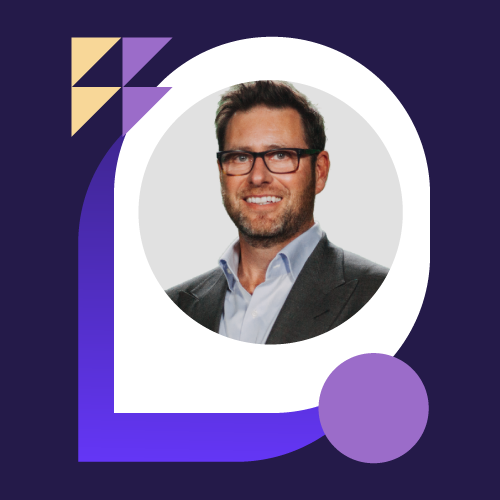How Kiewit Corporation Digs Into Variances With Planful with Angel Woodard
- 0.5
- 1
- 1.25
- 1.5
- 1.75
- 2
Angel Woodard: Hi, everyone. Thank you so much for joining me here at the 2021 Planful Perform conference. My name is Angel Woodard, and I'm here to tell you how Kiewit digs into variances using task manager in Planful. This process has given us the opportunity to accelerate our month end close. I started working for Kiewit back in 2006 as a secretary in the legal department. I'm now the IT controller and have been in finance for the past 13 years working with Kiewit technology group. My finance team manages all of our budgets, forecasts and workforce planning as well as processes all invoices for the department and handles all procurement. I also have a contracts team that handles all statements of work and all other contracts for multiple departments. Here at Kiewit there are two groups that are currently using the same Planful platform. Kiewit technology group whom I support, and also Kiewit business services. We have a total of five power users and 40 contributors. The technology group makes up 26 of those contributors and three power users. Jenny and I for my finance team support Kiewit business services as subject matter experts for Planful here at Kiewit with most of their questions and concerns while they're using the system. I'll share with you some personal information in just a moment, but first I want to introduce you to the Kiewit technology group power users. This picture was taken at the Planful conference in Las Vegas just a couple of years ago. We were having such a great time if you can't tell from the photo. That's me on the left and Joe, my director in the center, and finally Jenny, the other Planful powerful user there on the right. I guess you could say she's my right hand girl. I want to ask a quick question. By show of hands of everybody here, how many of you know what Kiewit is? Well, it looks like there might be a few people back in the back that have heard of us. That's cool. Just kidding. I pre- recorded this so that I could cringingly watch myself during Planful Perform this year. In short, Kiewit is one of North America's largest construction and engineering companies. Kiewit technology group is an overhead department within the company that manages all of Kiewit's IT needs. And now I'd like you to meet my family. I've been married to this fun guy, Rowdy, for 22 years and we have two gorgeous daughters. The short one in the front next me is Lexi. She's 16. And the terrified one's sitting back by her dad is Bailey. She just turned 11. And I don't want to leave out Lucy, our cool dog that's very spoiled. So why did we choose planful at Kiewit technology group? Previously, our department used an accustomed built Excel interface tool that bounced off of a huge database of financial and workforce information that we had to physically load into the database every week from SAP in order to crudely perform our budgeting forecasting and workforce planning. This tool was clunky at best, and it didn't allow us to accurately do our jobs as IT financial management professionals for multiple reasons. The largest setback is the lack of security that was in the tool. Because there was no role security built into the custom tool, we were forced to use blended rates for over 600 resources instead of their actual rates, which can make a huge financial impact. Previously, we built budgets in Excel worksheets working with over 25 managers. And we had separate sheets for operational expenses, workforce plans, any hardware and software, travel and training, and everything else. We faced a few years where we came in 10 to 15% under budget, which probably sounds like a wonderful problem to have but when your end goal is to come in as close to your budget as possible, it made us look like we were incapable of setting a budget and sticking to a plan. We knew we needed a change because our IT department and our responsibilities just kept growing. We finally made the decision to go with Planful in 2017. We implemented late in the year and we began using the platform fully in 2018. For the first year, we used the data load rule to load our budget up into the system. But every year since then we built the budget directly in Planful. We worked with a third party for implementation and while it wasn't perfect, we made it through. Planful has continuously improved their platform to the extent well beyond what I had imagined. And after just a couple of successful years using the tool, I'm so proud to say that in 2020, we came in just 0. 46% under our budget. These are the best results I've seen in the 13 years I've been in the department. The reason my speaking topic is so important to me is because we would have never been able to come in that close to our budget had we not been continuously reviewing our variances and have the ability to identify and resolve issues early to ensure our success. It's given us the ability to accelerate our variants and month end processes more than we could have ever hoped and that is why I want to share this with other planful customers. One more call out on this slide before I move on is just to point out that we have been able to more accurately manage the financials for our growing department with less than half the people than when we initially implemented with Planful. As I mentioned, I want to share with you the process that we use that has allowed us to easily review our variances every month. We've built a dynamic report giving each of our money managers the ability to monitor their actuals versus projection monthly. Let me tell you, it wasn't perfect the first time we rolled this out. I remember the first variance report we created. We sent an email out to 26 money managers simply saying," Go in to this report and typing your comments when it's required into column K comments." We knew so little about Planful at the time and we found out that multiple people couldn't be in the same dynamic report adding comment all at the same time and trying to save. In short words, it was chaotic, but we learned and eventually we figured it out. As I said before, Planful continuously improves their platform. So when they introduced task manager, we knew this was the solution that we'd been waiting for. So how do we do it in Kiewit technology group? Every month, Jenny, from my finance team meets with our money managers to discuss variances in their area that are 5% and$ 25, 000 over or under their plan, as well as any other issues or concerns they have regarding their financials for the month. Now you might be wondering how in the world did we come up with 5% and$ 25,000 criteria for a variance. This was simply the threshold that met our needs based off of the great differences in the budget amounts that each of our money managers own. This threshold should meet your individual needs and will likely be different for every organization. We've included a formula in the dynamic report to quickly identify those lines that have variances that meet the criteria. Additionally, we use task manager to assign a task to the money manager when a comment's required. You can see here in this example, this money managers area for hardware and software cost category indicates that a variance meets the criteria and thus the comment would be required. Once that requirement is identified, my team will go into the dynamic report and assign a task to the money manager asking them to add a comment to explain the variance. Now I'd like to show you a quick demo within Planful to show you how quick and easy this process is. So the first thing that you need to do is make sure within your dynamic report that comments in other settings is turned on. Once you've done that, you see this line here identifies the variance meets our criteria. You right click on the amount and add comment. And here I'm going to assign this to myself at Angel, you can select it when it pops up. I'm going to assign a task to myself and I'm going to say," Enter comment for variants by end of week." Our due date for variance reports this month is September 16th, and so I'm going to create the task. What this does is this sends an email to the money manager then. Let's go back into the presentation. After the admin goes in and assigns the task to the money manager, the money manager will receive an email similar to the one shown here. Their next step is to click the hyperlink within the email, and they're directed to the task manager within Planful. Here you'll see all the tasks that had been assigned. Find your task and under the task location column, click the hyperlink in order to go into the dynamic report. This'll take you into the variance report where you can review your variance and add your comments. The task manager window will come up like this. You can review the variance. You can double click on details if you need to just like as if you're in any dynamic report. When you're done reviewing, and you have an explanation for the variance, simply enter a comment and click reply. At this point, the money manager's job is done. Now that the money manager added their comments, the admin that assigned the task will receive an email notification that the comments have been added and the money managers task is complete. This allows us to have a full audit trail of all comments within the variance reports. Lastly, Jenny goes into the variance report and adds all comments from the tasks into column K labeled comments. This puts the comments into the dynamic report, allowing us to do the final step which is take a snapshot of the dynamic report in order to keep it for our audit trail. So here in the screenshot, you can see in the upper left- hand corner, I've highlighted the snapshot option within the dynamic report. Today I've shown you how Kiewit digs into variances using task manager in Planful. We talked about our requirements for comments regarding variances that are 5% and$ 25, 000 over or under their projection. I walked you through our complete process on how my team assigns a task to a money manager within the dynamic report. And we meet with money managers monthly to make sure that they have a complete explanation for all variances that meet our criteria. I showed you that after all the comments are input and the tasks are all completed, we take a quick snapshot of that monthly report. This allows us to keep a full audit trail of all of our variance reports and enables us to go back and review them if we need to. We've experienced so many successes in Planful. We now have 18 months of snapshots of variance reports in the tool for our reference. We can easily manage over 600 resources using one tool and we've cut our time in half by accelerating our variance and month end processes. And finally, we do all this with less than half of the finance professionals previously performing these duties. Trust me, the outcome is worth the one- time effort to set this up. I want to help you guys, and I love connecting with people. If you have any questions on how to set this up, feel free to message me through Planful Engage, which I'm pretty engaged in or on LinkedIn. I'd be more than happy to help. Thank you so much for joining me today and I hope you enjoy the rest of the conference.
DESCRIPTION
Kiewit Corporation needed a better way to investigate variances in plan versus actual, whether in budgets, forecasts, or projections. Hear Angel Woodard, IT Controller, explain how Keiwit used Planful dynamic reports to explore variances, and how Planful task manager adds collaboration with the business to construct, in context, the stories behind the variances. And, Angel will share tips and tricks based on how the company uses sublines in OPEX templates.








